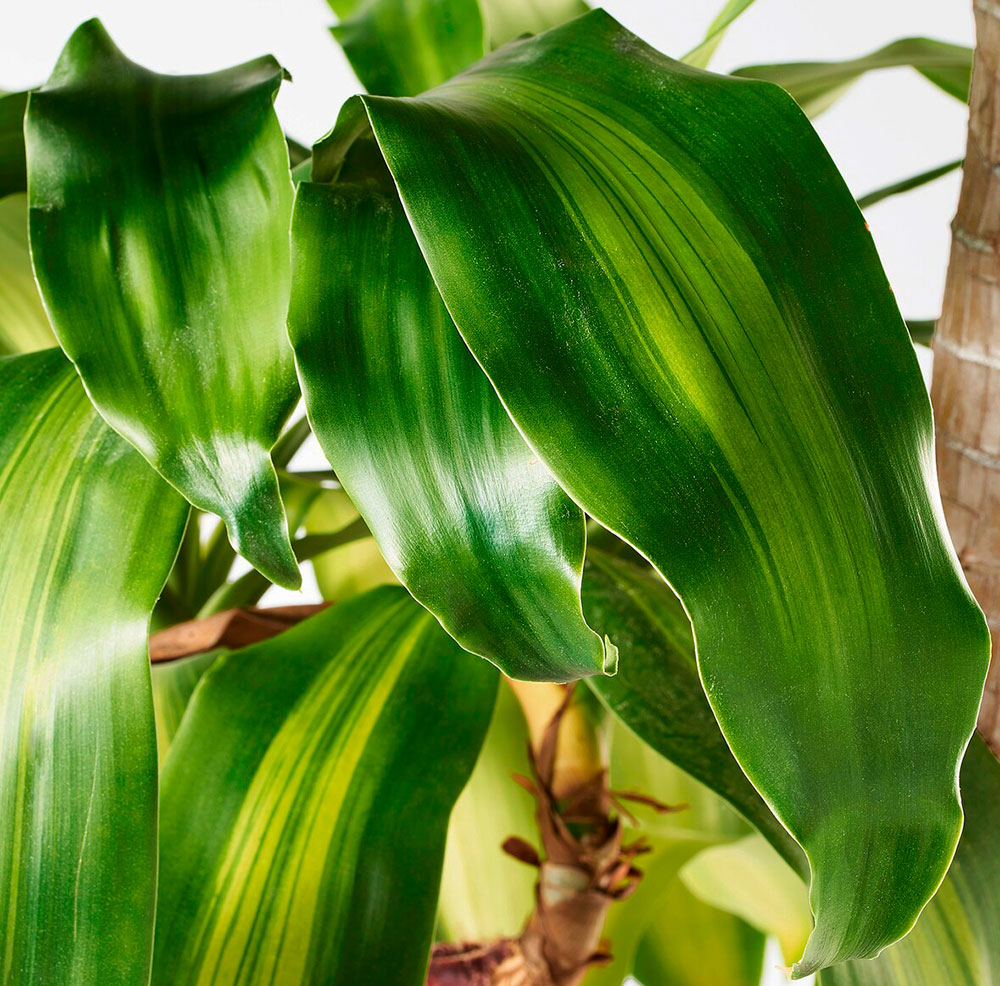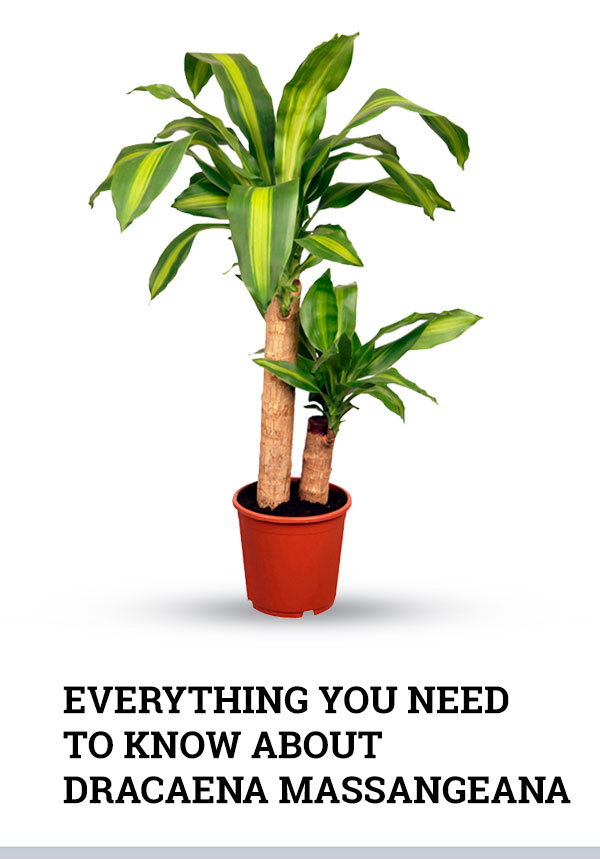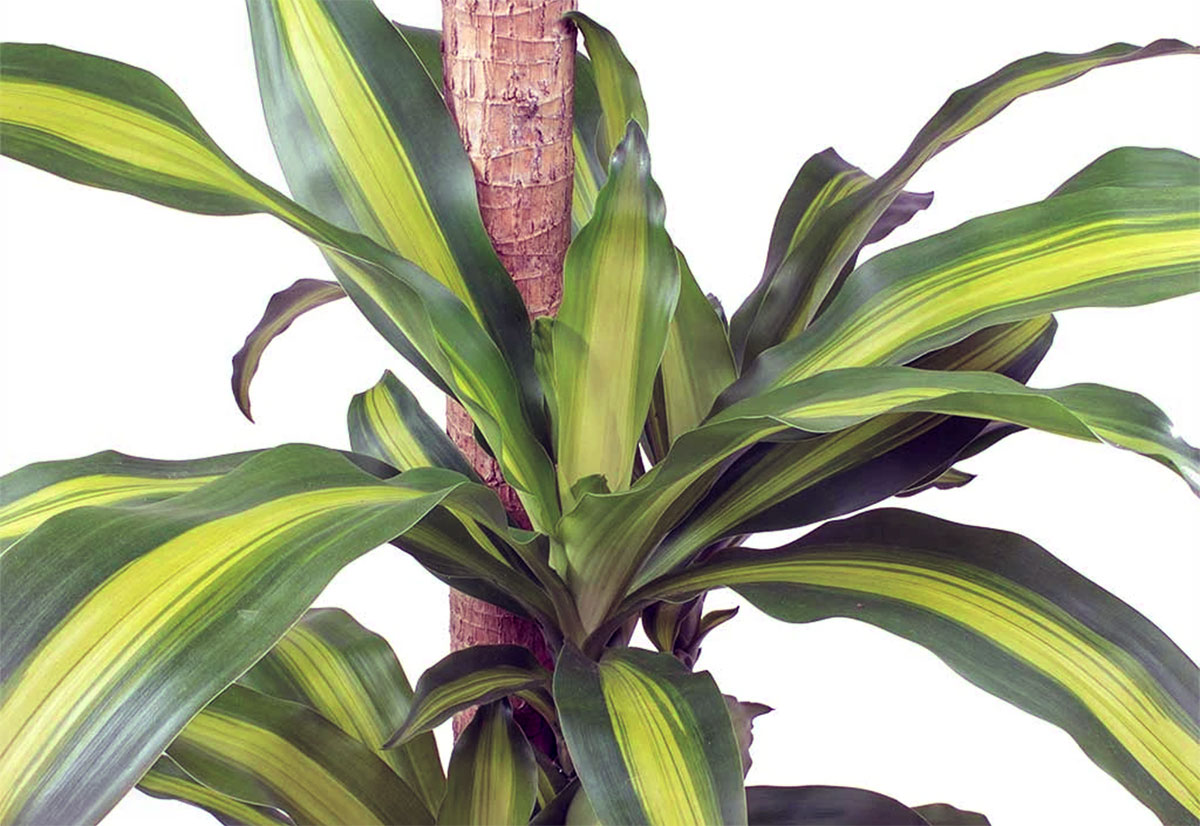When you know what to plant next to this or...
Dracaena Massangeana Plant Care Guide
Dracaena Massangeana is an evergreen deciduous plant. A characteristic feature of this dracaena variety is the presence of a ligneous trunk formed by the gradual fall of the lower leaves in adult plants. The trunk of Dracaena Fragrans Massangeana, very durable, like a tree, is able to condense moisture in itself. Due to this circumstance, Dracaena Massangeana is not too demanding of constant soil moisture. Growing in one pot can be both in single planting and multiple - in several trunks.
Dracaena Massangeana is one of the most common cultivated varieties of dracaena. One can find it most often in nature corners at home.
In the homeland, in tropical African savannas, this is a real full-fledged tree capable of reaching six or more meters in height. While with proper care, indoor Dracaena Massangeana grows no more than 1.5 - 2 meters in height and then its growth slows down.
✔ We Released The Dracaena HandBook
CLICK HERE TO LEARN MORE >>
Characteristic glossy leaves of a mosquid shape give decorativeness to the plant. In nature, the span of dracaena leaves in length can reach 60 cm, and in width - up to 10-15 cm. The size of a leaf of an indoor beauty is at times more modest: only 8-12 cm. The leaf coloration in Massangeana is unusual for most plants, but not for dracaena: a wide band of yellow-green runs along the center of the leaf plate.
As a plant grows older, the leaves seem to move along the trunk to the top, and dracaena begins to resemble a palm tree in its appearance, for this reason it is often called a “house palm”.

Dracaena Massangeana: Plant Care Guide
Dracaena Fragrans is one of the most unpretentious indoor plants. However, caring for it also has its nuances.

Lighting
Abundant lighting is one of the most important conditions for Dracaena Massangeana.
Dracaena Massangeana is very fond of light, it makes the leaves of the plant glossy. It is recommended to keep dracaena on the windowsill on the sunny side, but it does not like direct sunlight, as it can damage the leaves.
The plant is best placed near the east or south windows of the room.
Watering
Abundant watering is recommended for Dracaena Massangeana, but not excessive, to prevent rotting of roots and stem. It is enough to water Dracaena 2-3 times a week to maintain the substrate in a wet state. Use warm filtered or well-settled water for watering.
Temperature
Dracaena Massangeana prefers a moderate temperature regime without sharp changes. Try not to put the plant in permanently ventilated places - Dracaena Massangeana does not tolerate drafts well. In the cold season in the room where dracena is placed, the temperature should not fall below +12 +14°C, during the warm period of the year, it will feel comfortable at a temperature of +22°C +25°C.
If you have a loggia or balcony, then this place will be an excellent solution for dracaena for summer. In winter, on the contrary, put the plant away from the balcony, so that Dracaena Massangeana does not freeze, but it is not advised to put it close to the heating appliances.

Air humidity
Dracena Massangeana grows well in rooms with high humidity. Therefore, it is recommended to spray the leaves of the plant once every 2-3 days, and also wipe the leaves with a damp cloth, especially in the dry summer period. When spraying, do not allow direct sunlight to the leaves of dracaena, otherwise the plant can get a burn.
If the tips of the leaves begin to dry - this means that there is a very dry air in the room and it is necessary to spray the plant more often.
Feeding
Feeding is recommended to be carried out twice a month. Dracaena Massangeana fits any liquid fertilizer for palm plants. Fertilize the plant on wet soil, after watering. In winter, the plant should not be fed.

Repotting
Once in every 2-3 years, Dracaena Massangeana must be repotted into a larger pot. Be extremely careful while replanting, so as not to damage the fragile roots of the plant.
Dracaena Massangeana prefers a weakly acidic soil with a good content of peat and sand. It is best to use loose, nutritious soil for palm trees. A layer of drainage should be placed at the bottom of the pot to avoid rotting roots.
If a plant is bought in a store, it must be repotted into new soil immediately after purchase. A container for repotting should be 2 cm larger than the one in which the plant is usually sold. Before repotting, it is recommended to take the roots off the soil and carefully inspect them for pests. When they are detected - rinse the root system, dry and only then carry out replanting.
Watering of Dracaena Massangeana in the first few weeks after repotting should be moderate. It is better to do this after about half of the soil has dried. To make the plant feel better after repotting, you can spray the leaves with a growth stimulant.
Poisonous
Remember that Dracaena Massangeana is toxic to both cats and dogs. Do not allow your pets chew the leaves of the plant. It can cause weakness, vomiting and indigestion. At the first signs of poisoning, immediately bring your pet to a veterinarian. See more about pets and the effect toxins have here at the ASPCA.
Problems when growing and diseases of Dracaena Massangeana

In general, the care for Dracaena Massangeana does not cause much trouble, you only need to follow certain rules.
First, you should avoid overwatering of Dracaena Massangeana, which leads to yellowing of leaves and rotting of the roots. Insufficient watering and too dry air leads to drying of the tips of the leaves.
Second, try to avoid direct sunlight to the plant, which leads to burns.
If Dracaena Massangeana grows in a room with a low temperature, this is fraught with the appearance of gray rot. A sign of this disease is the appearance of brown spots on leaves.
As for pests, the leaves and trunk of Dracaena Massangeana can be hit by the mealybugs, aphid, warblers, and spider mites.
At least once a week, Dracaena Massangeana needs to be examined for pests. Insecticidal drugs will help to cope with them. If pests have already taken root on the plant, first it is necessary to remove them from leaves with a sponge soaked in a soap solution, and then treat Dracaena Massangeana with an insecticide.
With proper care, timely watering and comfortable temperature, your indoor Dracaena Massangeana will please you with a juicy green color of leaves and its exotic beauty.
To the commonest of dracaena types belong:
- Snake Plant
- Marginata
- Sanderiana
- Reflexa
- Fragrans
- Lemon Lime
- Janet Craig
- Warneckii
- Compacta
- Deremensis
- Draco (Dragon Tree)
- Lisa Cane
About the Author
My name is Michael Bauer, I have been growing and taking care of plants for 20 years. My dream has become a reality. I've had many difficulties along the way, but my love for our favorite plants has really helped me.So join us!
















